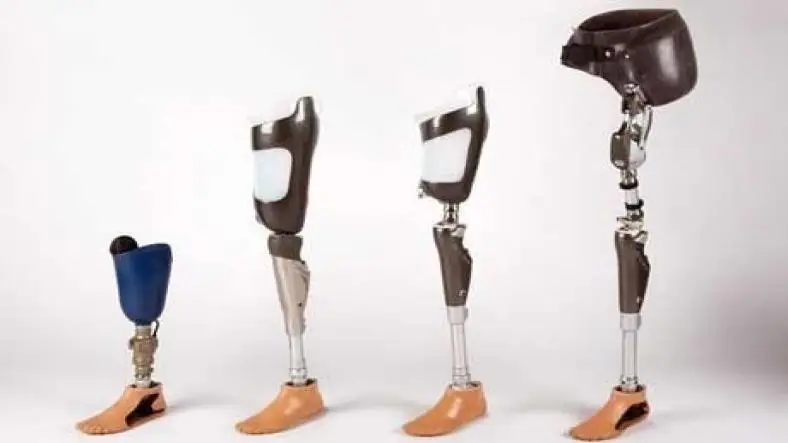Prosthetic limb technology has undergone remarkable transformation over the past two decades, evolving from basic mechanical replacements to highly sophisticated, sensor-integrated, and AI-assisted extensions of the human body. These innovations are not only restoring mobility for amputees but also redefining what artificial limbs can do—enhancing lives with improved functionality, comfort, and even sensation.
The Evolution from Mechanical to Smart Limbs
Traditional prosthetics were primarily focused on providing structural support—wooden legs, simple metal hooks, and unresponsive artificial limbs. While functional, they lacked flexibility, adaptability, and feedback. Today, however, the integration of smart materials, electronics, and human-machine interfaces has revolutionized prosthetic design.
Modern prosthetic limbs are now capable of:
- Interpreting muscle signals to control movement
- Adapting in real time to walking surfaces and user intention
- Providing sensory feedback to simulate touch
These upgrades are helping users not only walk or grasp objects more naturally but also regain confidence in daily life.
Key Innovations in Modern Prosthetics
1. Myoelectric and EMG-Based Control
Prosthetic arms today often use myoelectric control, where sensors detect electrical activity from muscles in the residual limb. These signals are translated into precise movements—opening a hand, rotating a wrist, or bending an elbow. This control method allows users to perform complex tasks with much greater ease compared to mechanical systems.
2. Bionic Limbs with AI Integration
Bionic limbs equipped with microcontrollers and machine learning algorithms are capable of learning user habits and responding to movement patterns. This makes motion smoother, more intuitive, and adaptive. For example, AI-driven prosthetic hands can automatically adjust grip strength based on the object being held—delicate for a paper cup, firm for a heavy object.
3. Sensory Feedback and Haptic Technology
One of the biggest limitations of earlier prosthetics was the lack of touch. Newer developments in haptics are making it possible for users to feel pressure, texture, or temperature through embedded sensors and vibration motors. Some systems are even designed to stimulate nerves to mimic the sensation of touch in the brain, enhancing both safety and dexterity.
4. 3D Printing and Customization
3D printing has made prosthetics more affordable and customizable. Limbs can now be printed to fit a person’s body precisely, improving comfort and usability. For children—who outgrow their prosthetics quickly—this has been particularly transformative.
Moreover, design isn’t limited to function alone. Users can choose cosmetic covers and aesthetic elements that reflect their personality, shifting the narrative from disability to empowerment.
Google Ad 1
5. Powered Lower-Limb Prosthetics
Lower-limb technology has also seen huge advancements. Powered knees and ankles now adjust in real time to terrain and walking speed. Devices like microprocessor-controlled knees (MPKs) and powered foot-ankle systems replicate a more natural gait, reducing strain on the rest of the body and improving balance, especially on stairs or slopes.
6. Brain-Computer Interfaces (BCI)
Still in early stages, BCIs offer a futuristic vision of prosthetics directly controlled by brain signals. Experimental setups have already shown promising results—users able to control robotic limbs with their thoughts, even experience phantom limb sensations being translated into feedback from prosthetics. While not yet mainstream, this is a direction researchers are heavily invested in.
Real-World Examples and Impact
Several companies and projects are making significant contributions:
- Open Bionics creates lightweight, affordable bionic arms using 3D printing and myoelectric control, popular for their user-friendly approach and superhero-themed designs for kids.
- Ottobock’s C-Leg is a well-known microprocessor-controlled prosthetic knee used worldwide for its adaptability and safety.
- DEKA Arm (nicknamed the "Luke Arm") allows for multi-grip functionality, complex wrist and hand movements, and better intuitive control—offering near-natural hand functionality.
These devices are helping users return to work, sports, hobbies, and independent living with far more ease than in previous decades.
Challenges That Still Remain
Despite the progress, several challenges need to be addressed:
- Cost and Accessibility: Advanced prosthetics can be expensive, and insurance coverage is inconsistent.
- Battery Life and Maintenance: As devices get more complex, they also require more power and regular servicing.
- Durability: While performance has improved, long-term reliability—especially in rugged conditions—remains a concern.
- Learning Curve: Some users take weeks or even months to fully adapt to new devices.
These hurdles are areas of active focus, with ongoing work aimed at making prosthetics more affordable, intuitive, and durable.
The Road Ahead
The future of prosthetic limb technology is being shaped by several exciting developments:
- Integration with wearable tech to track health and activity
- Self-calibrating limbs that adapt in real time to changing body dynamics
- Open-source prosthetics making cutting-edge tech available at lower costs
- Prosthetics that feel indistinguishable from biological limbs—both in movement and sensation
The goal is not just to replace lost limbs but to enhance human ability in ways we’ve only begun to imagine.
Conclusion
Prosthetic limb technology is no longer just about restoring movement—it's about restoring freedom, independence, and identity. Through the convergence of robotics, AI, and biomedical engineering, today’s prosthetics are smarter, more responsive, and more personalized than ever before. As innovation continues, the dream of lifelike, affordable, and widely available prosthetic limbs is quickly becoming reality.
Thanks for reading the article, for more health related articles read our peoples blog articles.














